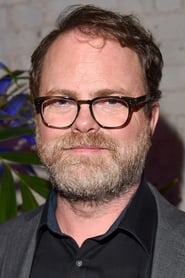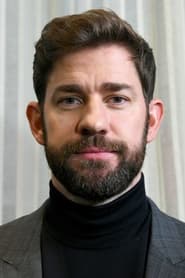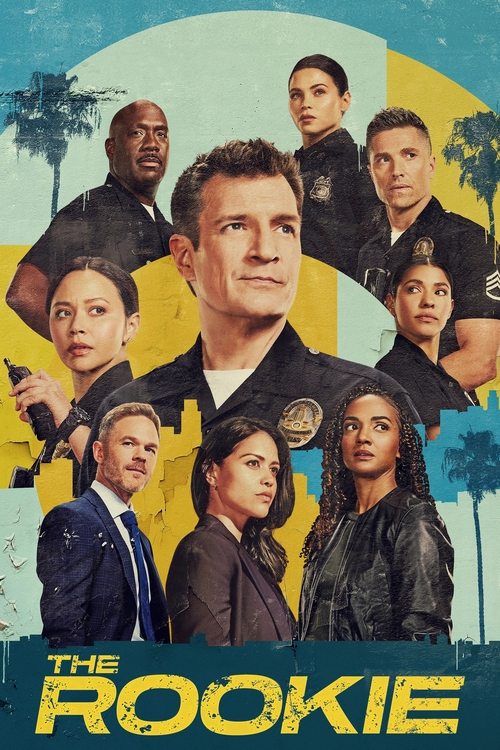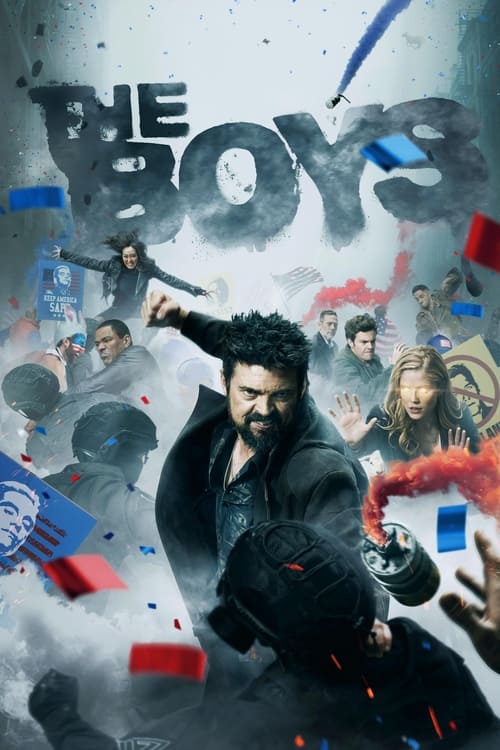
Ask Your Own Question
What is the plot?
In the "Season 1 Deleted Scenes" of The Office, the episode begins with a series of moments that were cut from the original airing of Season 1. The first scene features Michael Scott, the bumbling regional manager of Dunder Mifflin's Scranton branch, as he attempts to motivate his employees. He awkwardly tries to engage them with a motivational speech, but his lack of charisma and understanding of his staff's needs leads to a lackluster response. The employees, including Jim Halpert, Pam Beesly, and Dwight Schrute, exchange glances that reveal their skepticism and amusement at Michael's antics.
The next sequence shifts to a scene in the break room where Pam and Jim share a light-hearted conversation. Jim teases Pam about her engagement to Roy, which adds a layer of tension to their friendship. Pam's laughter is tinged with discomfort, as she is caught between her loyalty to Roy and her growing feelings for Jim. This moment highlights the underlying romantic tension that exists between Jim and Pam, setting the stage for future developments in their relationship.
Following this, there is a scene where Dwight is seen preparing for a fire drill. He takes his role as the Assistant to the Regional Manager very seriously, showcasing his overzealous nature. He meticulously checks the fire extinguishers and goes through safety protocols, while the rest of the office looks on with a mix of annoyance and amusement. This scene emphasizes Dwight's character as someone who is both dedicated and socially oblivious, further establishing the dynamics within the office.
In another deleted scene, Michael attempts to connect with his employees by sharing a personal story about his childhood. However, his story is awkward and lacks the emotional depth he intends to convey. The employees' reactions range from confusion to pity, as they struggle to understand the relevance of his tale. This moment illustrates Michael's desperate need for validation and acceptance from his team, despite their clear disinterest.
The episode also includes a scene where Jim and Dwight engage in a prank war. Jim places Dwight's stapler inside a Jell-O mold, which leads to Dwight's furious reaction. This prank encapsulates the playful rivalry between the two characters, showcasing Jim's mischievous side and Dwight's intense competitiveness. The scene is filled with physical comedy as Dwight tries to retrieve his stapler, further highlighting the comedic tone of the series.
Another notable moment features Pam and Jim discussing their plans for the weekend. Pam expresses her desire to go to a local art show, while Jim shows genuine interest in her plans. This conversation deepens their bond and hints at Jim's feelings for Pam, as he encourages her to pursue her interests. The warmth of their interaction contrasts with the tension of Pam's engagement, emphasizing the complexity of their relationship.
As the episode progresses, there is a scene where Michael tries to implement a new office policy regarding personal phone calls. His attempt to enforce this policy is met with resistance from the staff, who find his rules unnecessary and intrusive. The scene captures the frustration of the employees as they navigate Michael's misguided attempts at leadership, showcasing the challenges of working under his management.
The final sequence of deleted scenes features a montage of various office interactions, including moments of camaraderie and conflict among the staff. These snippets provide insight into the daily lives of the employees at Dunder Mifflin, highlighting their unique personalities and the dynamics of their relationships. The episode concludes with a sense of continuity, as the characters continue to navigate their professional and personal lives within the confines of the office.
What is the ending?
In the episode "Season 1 Deleted Scenes" of The Office, there is no traditional ending as it is a compilation of deleted scenes from the first season. The scenes provide additional context and humor to the characters and their interactions, but they do not culminate in a specific conclusion or resolution.
Expanding on this, the episode features a series of scenes that were cut from the original airing of Season 1. These scenes include various interactions among the employees of Dunder Mifflin, showcasing their personalities and relationships in more depth.
Scene 1: The episode opens with a scene in the office where Michael Scott is attempting to motivate his employees. He uses a series of awkward jokes and motivational quotes, which fall flat. The employees, particularly Jim Halpert and Pam Beesly, exchange glances that convey their shared disbelief and amusement at Michael's antics. Michael's desire to be seen as a friend rather than a boss is evident, but his methods often lead to discomfort rather than camaraderie.
Scene 2: In another scene, Dwight Schrute is seen in his desk area, showcasing his eccentric personality. He is engaged in a conversation with Michael about the importance of beet farming, which he is passionate about. Dwight's intensity and lack of social awareness are highlighted, as he tries to convince Michael that his farming knowledge is relevant to their work at the paper company. This scene emphasizes Dwight's character as someone who is deeply committed to his interests, often to the detriment of his social interactions.
Scene 3: The next scene features Jim and Pam at the reception desk, where they share a light-hearted moment. Jim playfully teases Pam about her love for a particular television show, and they share a laugh. This interaction showcases the budding friendship and chemistry between them, hinting at the deeper feelings that will develop as the series progresses. Pam's shy demeanor contrasts with Jim's playful nature, creating a dynamic that is both endearing and relatable.
Scene 4: A later scene involves a meeting where Michael tries to discuss office policies. His lack of seriousness and tendency to make jokes during a serious discussion frustrates some employees, particularly Stanley Hudson, who is visibly annoyed. This scene illustrates the ongoing conflict between Michael's desire to be liked and the need for professionalism in the workplace. Stanley's exasperation serves as a counterpoint to Michael's obliviousness.
Scene 5: The episode concludes with a montage of various interactions among the staff, including moments of camaraderie, tension, and humor. The characters are shown in their natural office environment, engaging in tasks, gossiping, and navigating the complexities of their relationships. This final scene encapsulates the essence of the show, highlighting the everyday experiences of the employees at Dunder Mifflin.
Throughout these deleted scenes, the fates of the main characters remain unchanged as they continue to navigate their lives in the office. Michael Scott remains the well-meaning but often misguided boss, Dwight Schrute is the eccentric and ambitious salesman, Jim Halpert is the charming and witty salesman who often serves as the audience's perspective, and Pam Beesly is the sweet and artistic receptionist who is beginning to find her voice. Each character's journey is still in its early stages, setting the groundwork for the relationships and conflicts that will develop in future episodes.
Is there a post-credit scene?
In "The Office" Season 1 Deleted Scenes, there is no post-credit scene. The episode primarily consists of various deleted moments that were not included in the original airing of Season 1. These scenes provide additional context and humor, showcasing character interactions and comedic situations that were cut for time.
The deleted scenes feature familiar characters like Michael Scott, Jim Halpert, Pam Beesly, and Dwight Schrute, highlighting their quirky dynamics and the everyday absurdities of office life. For instance, there are moments where Michael attempts to motivate his employees with awkward pep talks, Jim plays pranks on Dwight, and Pam navigates her crush on Jim while dealing with the office's mundane routines.
Overall, the deleted scenes serve to enrich the viewer's understanding of the characters and their relationships, but they do not include any post-credit content.
What additional scenes feature Michael Scott's management style in the deleted scenes?
In the deleted scenes, Michael Scott's management style is further highlighted through various interactions with his employees. One notable scene shows him attempting to motivate the staff with an overly enthusiastic pep talk, which reveals his desire to be liked rather than respected. His awkwardness and lack of awareness about appropriate workplace behavior are emphasized, showcasing his internal struggle between wanting to be a friend and a boss.
Are there any deleted scenes that provide more background on Jim and Pam's relationship?
Yes, there are several deleted scenes that delve deeper into Jim and Pam's relationship. One scene features Jim playfully teasing Pam about her love for a particular movie, which highlights their chemistry and the playful banter that characterizes their dynamic. Another scene shows Pam expressing her frustrations about her engagement to Roy, revealing her internal conflict and feelings for Jim, which adds depth to their budding romance.
What moments in the deleted scenes showcase Dwight Schrute's eccentric personality?
The deleted scenes include several moments that emphasize Dwight Schrute's eccentric personality. One scene depicts him passionately explaining the importance of beet farming, complete with bizarre facts and anecdotes that only he finds fascinating. Another scene shows him engaging in a competitive game with Jim, where his intense focus and over-the-top competitiveness are on full display, further illustrating his quirky nature.
Do any deleted scenes provide insight into the office dynamics among the employees?
Yes, there are deleted scenes that offer insight into the office dynamics. One scene features a group discussion about the best way to handle a difficult client, showcasing the differing opinions and personalities of the employees. The interactions reveal alliances and rivalries, particularly between Jim and Dwight, as well as the camaraderie among the rest of the staff, highlighting the unique relationships that define the office environment.
What additional comedic moments are present in the deleted scenes involving Kevin Malone?
In the deleted scenes, Kevin Malone has several comedic moments that enhance his character's lovable but bumbling nature. One scene shows him attempting to impress his coworkers with a cooking tip that goes hilariously wrong, leading to a messy situation in the break room. Another moment features him awkwardly trying to join a conversation about sports, only to misinterpret the topic entirely, showcasing his endearing lack of social awareness.
Is this family friendly?
The Office, season 0 titled "Specials," episode 50 titled "Season 1 Deleted Scenes," contains several moments that may be considered objectionable or upsetting for children or sensitive viewers. Here are some aspects to consider:
-
Innuendos and Adult Humor: The show often features sexual innuendos and jokes that may not be appropriate for younger audiences. Some deleted scenes may include suggestive comments or situations.
-
Workplace Dynamics: The interactions between characters can sometimes be uncomfortable, showcasing awkward social situations, misunderstandings, and conflicts that might be distressing for sensitive viewers.
-
Language: There may be instances of mild profanity or inappropriate language that could be unsuitable for children.
-
Emotional Tension: Some scenes may depict characters experiencing frustration, embarrassment, or conflict, which could be upsetting for younger viewers or those sensitive to emotional distress.
-
Social Issues: The show occasionally touches on themes of exclusion, bullying, or social awkwardness, which might resonate negatively with some viewers.
Overall, while The Office is a comedy, its humor and themes may not be suitable for all audiences, particularly children.














